
Edeowie Station is a 69,000ha working sheep and cattle station which, like many grazing properties, has supplemented its income by providing a range of accommodation options to the 750,000 tourists who pass through South Australia’s spectacular Flinders Ranges every year.
There are several choices for those who want to spend a night or more at Edeowie Station, including bush camping, shearers’ quarters and a guest house.
The guest house sleeps up to six people and it offers all the comforts of home – including a telly, dishwasher, air-conditioning and laundry – so all you need bring with you is food… and perhaps a bottle or two of whatever tickles your fancy.

In addition, the station’s nine-bedroom shearers’ quarters will sleep up to 18 guests, making it ideal suited to bushwalking and four-wheel driving groups wishing to explore the property and other nearby attractions.
Those seeking a somewhat unique and remote bush experience should check out the property’s Brachina Hut. Little changed from when it was constructed in the 1800s, this rustic hut sleeps up to eight people. There is no power or lighting, but a wood stove and separate shower room supplied by a hot water ‘donkey’ provide a reasonable degree of comfort.
Brachina Hut is, unsurprisingly, located near the Brachina Gorge access to the Ikara Flinders Ranges National Park. Sitting on the banks of the (usually) dry Brachina Creek, the hut wouldn’t look out of place in a Spaghetti Western.

The nearby gravel road running through Brachina Gorge is named the Geological Way, which takes its name from the 130 million years of rock strata exposed by the gorge where it cuts through the Heysen Range.
The tectonic uplift that created the Flinders Ranges blocked the western flow of rainfall, creating a large body of water on the eastern side of the range.
This body of water eventually broke through the range carving out Brachina Gorge in the process.

Room to move
One of the great things about station stays is that you don’t find yourself cheek by jowl with hordes of tourists ruining the peace and solitude – something which has to be one of the outback’s most appealing aspects.
While the station also offers five bush campsites, they are set well apart to ensure guests’ privacy. And without mobile service out here (except near the homestead) you won’t be bothered by the troubles you’ve left behind.
Firewood can be purchased to use at the bush campsites, and this is delivered by Edowie’s managers Peter and Wendy, who go out of their way to make guests’ stays as pleasant as possible.
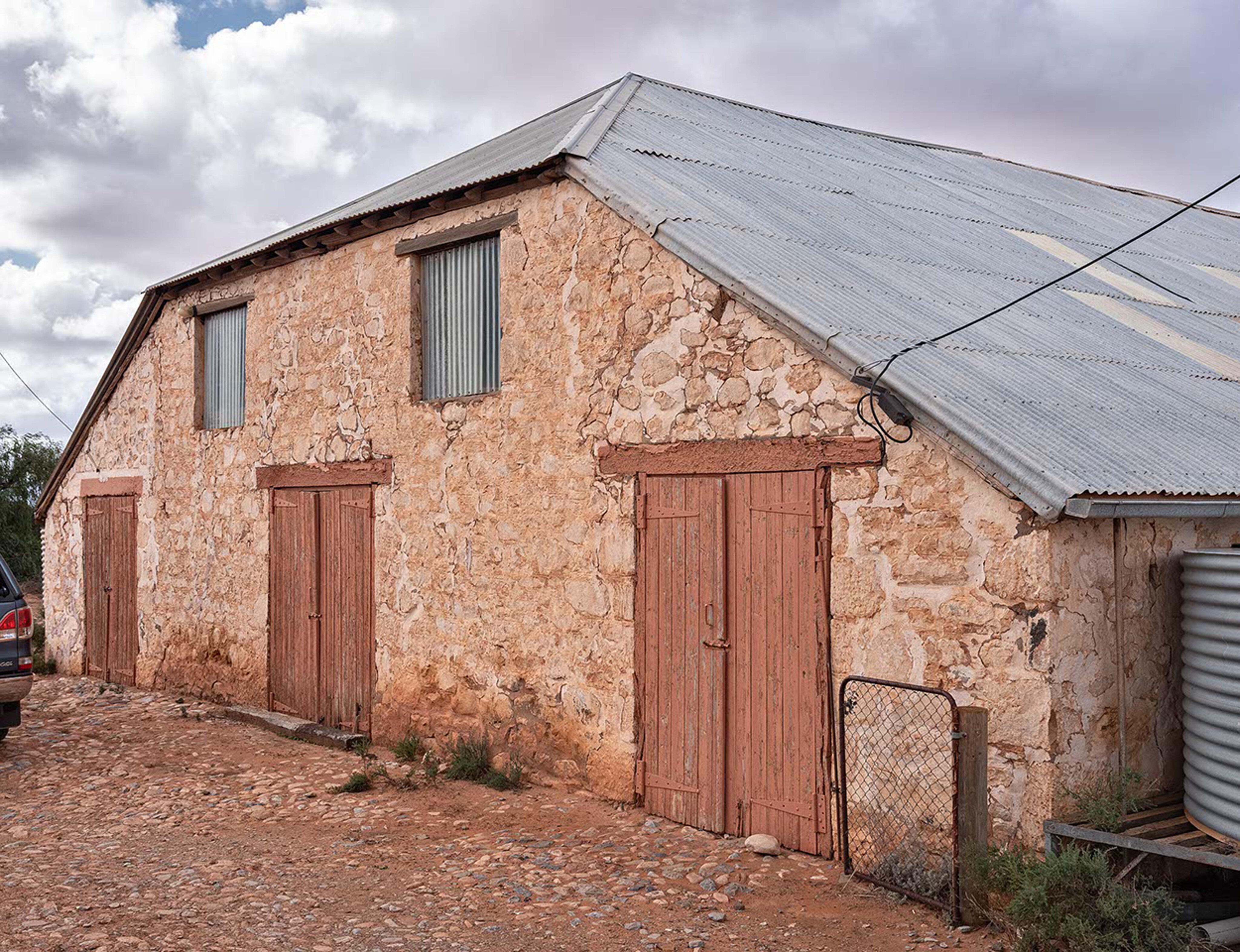
There are long-drop toilets at the campsites and shower facilities near the station’s old shearing shed.
This is proper bush camping and as such Edeowie is perhaps better suited to those travelling in self-contained vans or campers, with their own toilet and shower facilities, and no need for 240V power.
Pets are not allowed on the station given the risk to stock and native animals, as well as the danger presented by 1080 poison baits that may have been picked up by crows in the adjoining National Park and redistributed far and wide.
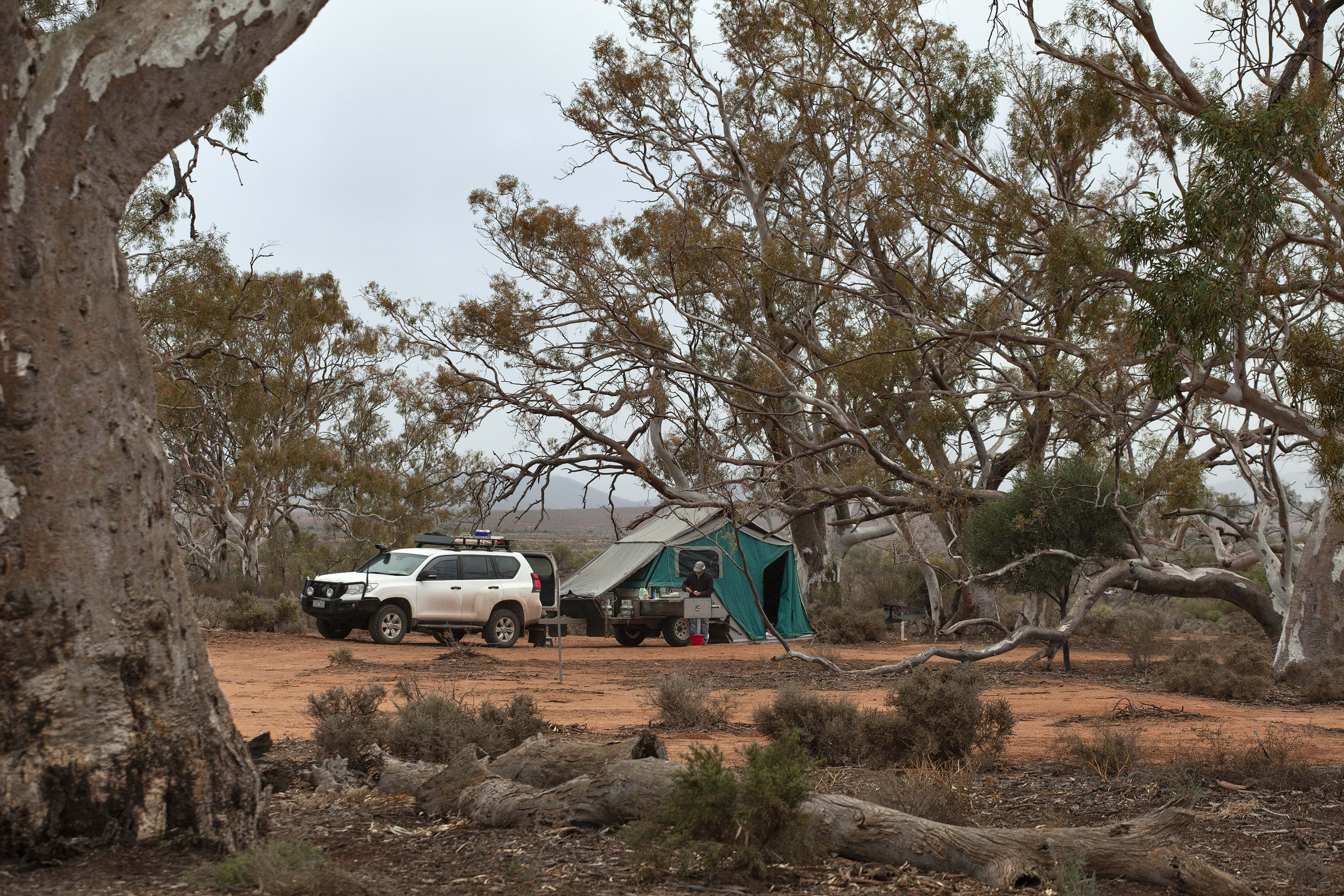
Colours of the outback
The sand is deep red in places with the occasional low dune, not unlike those found in the Simpson Desert.
The station’s bush camping sites look across to Mount Abrupt, which rises some 700m above the flat plains to its west.
The sunsets at Edeowie Station can be spectacular and while sunrises are largely masked by the ranges to the east, both dawn and dusk often see the clouds over Wilpena Pound painted with vibrant colours. Stately red gums, hundreds of years old, punctuate the landscape and when lit by the soft early morning light make you feel like you are standing in a Heysen painting.

In fact, Sir Hans Heysen frequented the nearby Aroona Valley homestead and painted some of his famous works there early last century.
The Flinders literally blossoms after good rains and when we visited, recent rainfall in the area had made me hopeful of seeing a good range of wildflowers, but Edeowie was still very dry as it was early in the season, and the flat plains no doubt experience less rainfall than the ranges themselves.
That said, foliage along the water courses and near the range were starting to show some colour, with wildflowers and native shrubs racing to make the most of their short growing season.

In this harsh and arid climate, native blooms tend not to be particularly showy given their need to conserve energy for survival.
Apart from the stunning views, there is something for everyone at Edeowie Station – ruins of old buildings from the 1800s, bushwalks in Bunyeroo and Edeowie Gorges, historic buildings and a four-wheel drive track that runs out to Bunyeroo Gorge before circling back to the homestead.
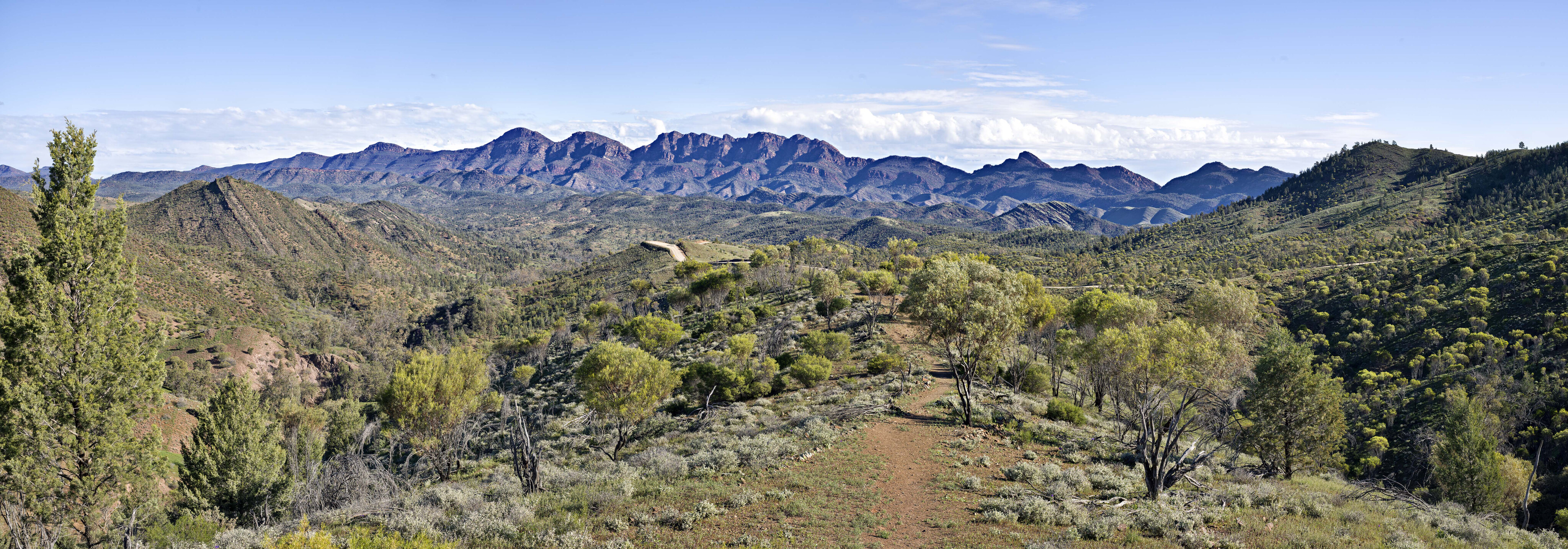
History Lesson
Edeowie was first settled in 1851. By the 1860s a number of copper mines opened in the area and with above average rainfall, along with high prices for both copper and wool, prospects for the region looked good.
Adelaide residents speculated on property by buying up blocks in new townships along the supply routes used by bullock teams. Edeowie was one such town and in 1863 a hotel and a supply store were opened.
Drought conditions saw the new town fall upon hard times and the 1864 population peak of 316 had fallen to 36 people just two years later.

The hotel finally closed in 1886 and its ruins (and those of the supply store) still stand not far from the station homestead.
The immediate area around the hotel is littered with thousands of broken bottles, suggesting many a thirst was quenched there. Hard drinking probably provided one of the few escapes from what would have been a difficult life in those early days.
The homestead cemetery has a plaque listing 16 residents of the early township who passed away there, a third of whom were under eight years of age.

Making tracks
The walk into Edeowie Gorge piqued my interest and while I did get to the start of the Gorge, the track was little used and quite indistinct in places.
It would be easy to lose your way and the need to continually watch one’s step given the uneven and loose rocky ground had me deciding this walk was one for more seasoned and experienced bushwalkers than myself.
The station has a four-wheel drive track that runs out to the entrance to Bunyeroo Gorge (another walk) before looping back to the homestead. The track has a loose rocky surface in places and a number of steep drops into and out of dry creek beds and washaways.
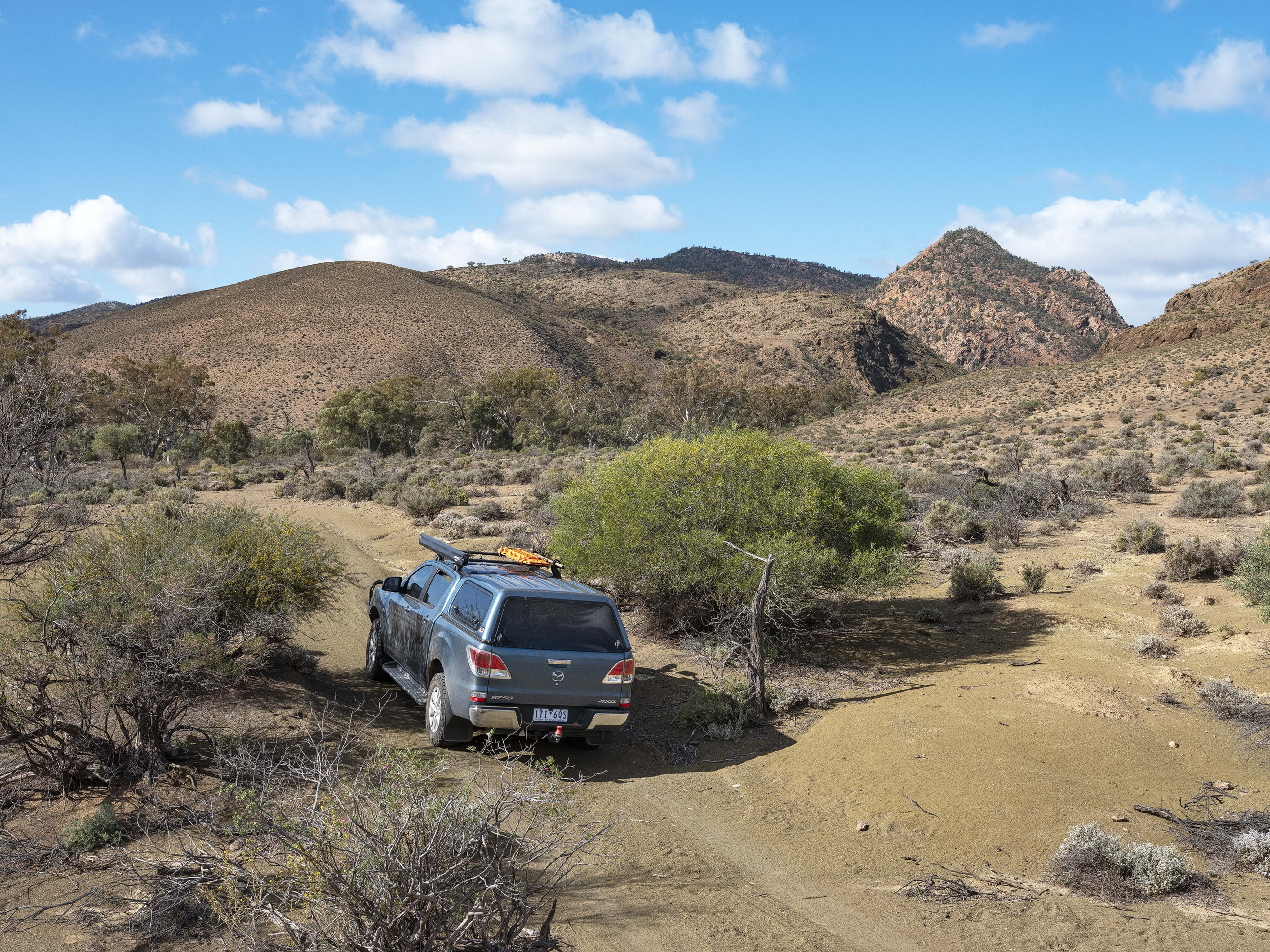
For a time the track follows a creekbed where white native daisies thrive and other native shrubs were just beginning to flower in a range of colours.
This is relatively flat country, and while the drive is interesting and well worth doing, it probably isn’t going to get a seasoned off-roader’s blood racing.
The old shearing shed and shearers quarters near the homestead were built in 1860 and are still in use today. Unlike most old outback shearing sheds, which were constructed of timber and corrugated iron, the shed at Edeowie is built from stone.

Its size is impressive and while the original shingle roof has been replaced with iron, in places some shingles are still visible from inside the building.
Apart from exploring the station it is only a short drive to Brachina Gorge and the Geological Trail. At the eastern end of the gorge, the Bunyeroo Valley Scenic Drive winds back towards Wilpena in the south, along the way providing spectacular views of the Pound.
To the north of the Geological Trail, as it runs towards the Blinman road, there are several good campgrounds, my favourite being at the end of Aroona Valley, near the ruins of the old Aroona Homestead. As mentioned earlier, anyone with knowledge of Hans Heysen’s paintings will quickly recognise some of the scenery here.
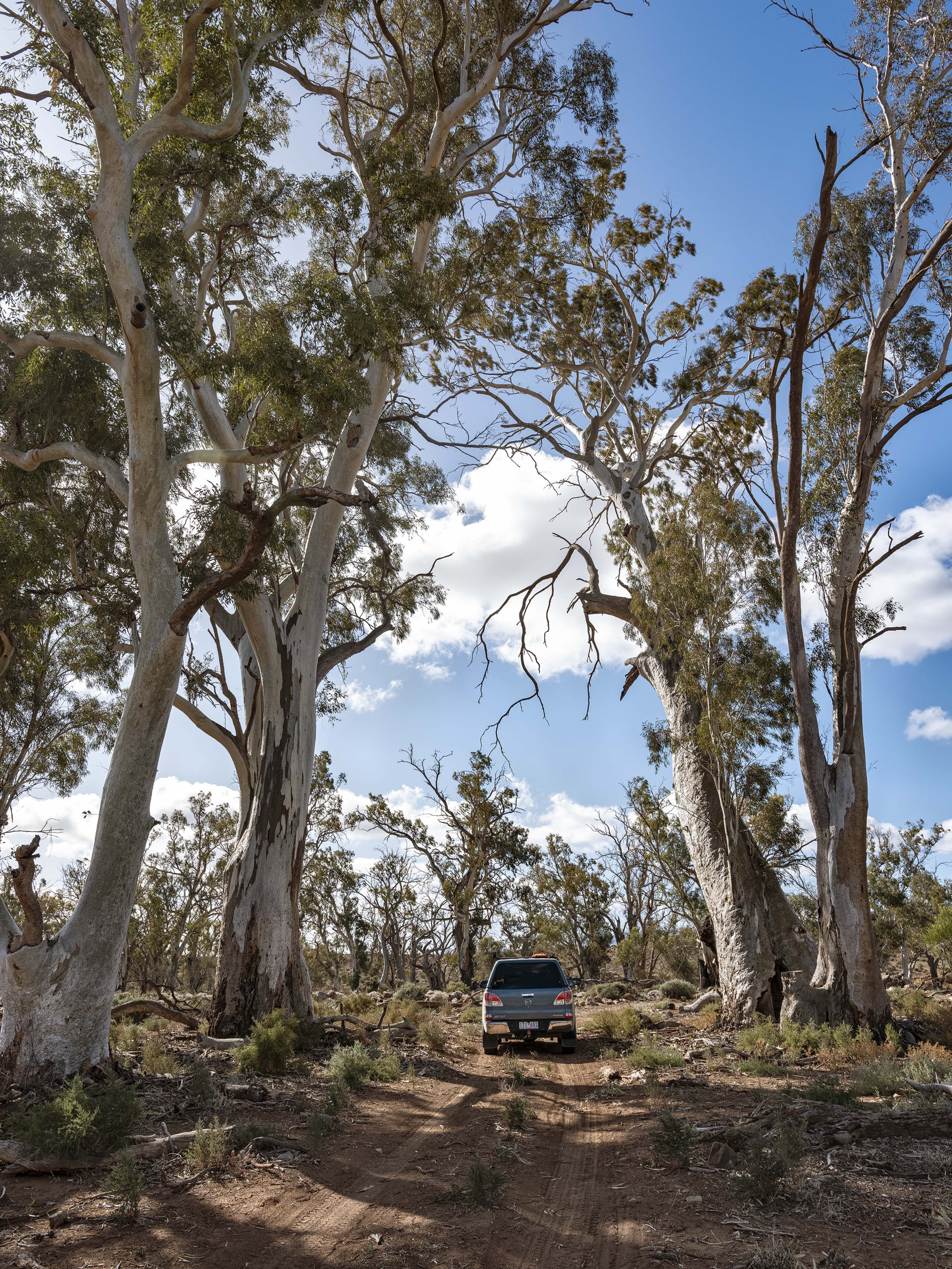
Parachilna Gorge
Those in need of supplies or fuel can reprovision at Parachilna or the Angorichina Tourist Village near Blinman (which incidentally has the highest elevation of any town in South Australia).
Needing a gas refill, we stopped in Angorichina on our way north after our stay at Edeowie. This detour took us through Parachilna Gorge which has been carved from the range by eons of floodwater.
Vibrant, ochre-coloured cliffs tower over the wide dry creek bed lined with huge old river gums. The gorge is sufficiently wide in places to offer numerous shady campsites set back off the road.

While this wasn’t a holiday season, the 20 or so camps seen along the gorge suggested many grey nomads know about Parachilna Gorge.
A couple of decades ago I expected those camps would have been mainly tents, 10 years ago, camper trailers were probably the weapon of choice, but today’s remote-area tourists seem to have moved on from tents and basic campers.
Along Parachilna Gorge, like every other place we visited during our month-long journey north to Queensland and down the Darling River, top-of-the-range campers and off-road and semi-off-road caravans were the norm. The money invested in these assets over the last couple of years must be staggering.

And that’s without factoring in the cost of all the shiny new tow vehicles out there.
I’d forgotten how picturesque the drive through Parachilna Gorge was, so we decided to stay on at Angorichina for a couple of days to recharge our batteries (and given the overcast conditions, those of our van). At nearby Blinman there was hardly a parking spot left in the main street given the number of vans and campers that had pulled in.
I was there in a vain attempt to access the internet which the locals said was available ‘sometimes’ but a satellite connection was required for anything usable.

We got ‘online’ a couple of days later at the Leigh Creek library, but apart from Bourke in New South Wales we had no internet access for the next couple of weeks.
Just about everything we do these days seems to be reliant on being plugged into the internet and I may need to review my usual practice of hot-spotting my phone for a laptop connection. It clearly isn’t up to the task in the outback, even when there is mobile signal.
Apart from the privations of not having internet access, Edeowie Station and its surrounding attractions make it a very pleasant base to spend a few days and get back in touch with nature. I for one have certainly pencilled in a return visit.

COMMENTS